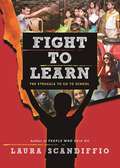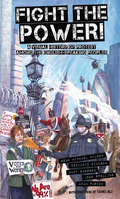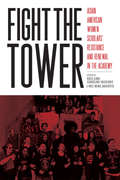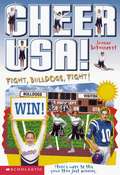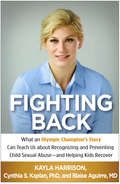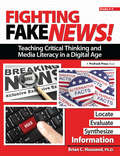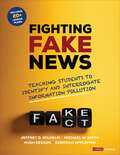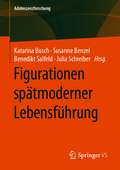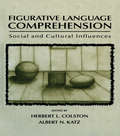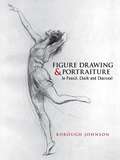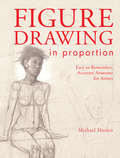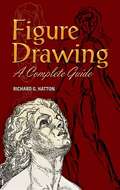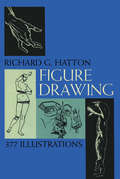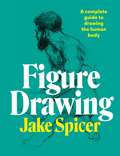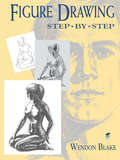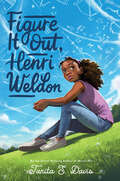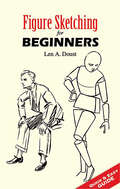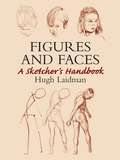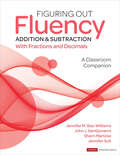- Table View
- List View
Fight To Learn: The Struggle To Go To School
by Laura ScandiffioIn many countries around the world, universal access to education is a seemingly unattainable dream; however, determined individuals with vision and drive have made this dream come true for many. This book highlights people such as Okello, a former child soldier in Uganda, who founded a school for children like himself whose education was derailed by war; Julia Bolton Holloway who realized that the only effective way to educate Roma children was to teach literacy to their parents at the same time; Shannen Koostachin, a passionate 13-year-old whose fight for the right of First Nations children to have proper schools endured even after her untimely death. These uplifting stories of people who were undeterred in their fight to bring education to children will leave young readers with excellent models of how to mobilize support when fighting for social justice.
Fight the Power!
by Sean Michael Wilson Polyp Benjamin Dickson Hunt Emerson Adam PasionThis book visualises key moments in history where ordinary people have risen up and fought governments, corporations, even empires. When the 99% have stood up to combat exploitation and abuse or in pursuit of freedom of action and a better life. In other words, to show times in history, when people have struggled forward to FIGHT THE POWER!
Fight the Tower: Asian American Women Scholars’ Resistance and Renewal in the Academy
by Grace J. Yoo Shirley Hune Robyn Magalit Rodriguez Jane Junn Akiko Takeyama W P Kieu Linh Valverde Wei Ming Dariotis Eliza Noh Mai’a K. Cross Cara Maffini Pham Melody Yee Jing Mai Shannon Deloso Kaozong N. Mouavangsou Cindy Nhi Huynh Rani Neutill Brett J. Esaki Melissa-Ann Nievera-Lozano Allyson Tintiangco-Cubales Genevieve Erin O’BrienAsian American women scholars experience shockingly low rates of tenure and promotion because of the particular ways they are marginalized by the intersectionalities of race and gender in academia. Although Asian American studies critics have long since debunked the model minority myth that constructs Asian Americans as the ideal academic subject, university administrators still treat Asian American women in academia as though they will simply show up and shut up. Consequently, because silent complicity is expected, power holders will punish and oppress Asian American women severely when they question or critique the system. However, change is in the air. Fight the Tower is a continuation of the Fight the Tower movement, which supports women standing up for their rights to claim their earned place in academia and to work for positive change for all within academic institutions. The essays provide powerful portraits, reflections, and analyses of a population often rendered invisible by the lies that sustain intersectional injustices in order to operate an oppressive system.
Fight, Bulldogs, Fight! (Cheer USA #2)
by Jeanne BetancourtIt's time for the big football game between the Claymore Bulldogs and their legendary rivals, the Cougars. As the rivalry heats up, some of the pranks get out of hand...
Fighting Back: What an Olympic Champion's Story Can Teach Us about Recognizing and Preventing Child Sexual Abuse--and Helping Kids Recover
by Kayla Harrison Cynthia S. Kaplan Blaise AguirreTwo-time Olympic gold medalist Kayla Harrison has always been a fighter--yet as a young teen, no one knew she was also a victim. Combining Kayla's powerful story of sexual abuse by her judo coach with science-based information from two renowned therapists, this unique book provides critical guidance for parents and professionals. Learn how to spot the signs that a child or teen is being groomed, why kids stay silent about their trauma, how they struggle with self-blame and the brutal betrayal of a trusted authority figure, and exactly what kind of help they need to recover. No one is more qualified than Kayla and her expert coauthors to explain the impact of child sexual abuse--and what you can do to keep kids safe.
Fighting Fake News! Teaching Critical Thinking and Media Literacy in a Digital Age: Grades 4-6
by Brian HousandEducators have long struggled to teach students to be critical consumers of the information that they encounter. This struggle is exacerbated by the amount of information available thanks to the Internet and mobile devices. Students must learn how to determine whether or not the information they are accessing is reputable. Fighting Fake News! focuses on applying critical thinking skills in digital environments while also helping students and teachers to avoid information overload. According to a 2017 Pew Research report, we are now living in a world where 67% of people report that they get their “news” from social media. With the lessons and activities in this book, students will be challenged to look at the media they encounter daily to learn to deepen and extend their media literacy and critical thinking skills. Now more than ever, teachers need the instruction in Fighting Fake News! to teach students how to locate, evaluate, synthesize, and communicate information.Grades 4-6
Fighting Fake News: Teaching Students to Identify and Interrogate Information Pollution (Corwin Literacy)
by Michael W. Smith Jeffrey D. Wilhelm Deborah Appleman Hugh KessonCritical thinking and online reading need to go hand in hand—but they often don’t. Students click, swipe, and believe because they don’t know how to do otherwise. At times, so do we. And that’s a problem. Fighting Fake News combats this challenge by helping you model how to read, myth-bust, truth-test, and respond in ways that lead to wisdom rather than reactivity. No matter what content you teach, the lessons showcased here provide engaging, collaborative reading and discussion experiences so students can: Notice how teacher and peers read digital content, to be mindful of how various reading pathways influence perception Identify the author background, the website sponsor, and other evidence that help set a piece in context Stress-test the facts by evaluating news sources, reading laterally, and other critical reading strategies Use "Reader’s Rules of Notice" to learn to identify common rhetorical devices used to influence the reader Be aware of how for-profit social media platforms feed on our responses to narrow rather than widen our reading landscape We are still in the wild west era of the digital age, scrambling to impart a safer, ethical framework for evaluating information. Thankfully, it distills to one mission: teach students (and ourselves) how to think critically, and we will forever have the tools to fight fake news.
Fighting Fake News: Teaching Students to Identify and Interrogate Information Pollution (Corwin Literacy)
by Michael W. Smith Jeffrey D. Wilhelm Deborah Appleman Hugh KessonCritical thinking and online reading need to go hand in hand—but they often don’t. Students click, swipe, and believe because they don’t know how to do otherwise. At times, so do we. And that’s a problem. Fighting Fake News combats this challenge by helping you model how to read, myth-bust, truth-test, and respond in ways that lead to wisdom rather than reactivity. No matter what content you teach, the lessons showcased here provide engaging, collaborative reading and discussion experiences so students can: Notice how teacher and peers read digital content, to be mindful of how various reading pathways influence perception Identify the author background, the website sponsor, and other evidence that help set a piece in context Stress-test the facts by evaluating news sources, reading laterally, and other critical reading strategies Use "Reader’s Rules of Notice" to learn to identify common rhetorical devices used to influence the reader Be aware of how for-profit social media platforms feed on our responses to narrow rather than widen our reading landscape We are still in the wild west era of the digital age, scrambling to impart a safer, ethical framework for evaluating information. Thankfully, it distills to one mission: teach students (and ourselves) how to think critically, and we will forever have the tools to fight fake news.
Figurationen spätmoderner Lebensführung (Adoleszenzforschung #10)
by Susanne Benzel Julia Schreiber Benedikt Salfeld Katarina BuschDer Band versammelt Beiträge, die sich dem Konnex von Psyche und Gesellschaft widmen, wie er auch im Zentrum der Arbeiten von Benigna Gerisch und Vera King steht. Anhand unterschiedlicher Themen wie Adoleszenz, Migration, Alter, Geschlecht und Generationenverhältnisse werden verschiedene Dimensionen spätmoderner Lebensführung beleuchtet. Übergreifend wird so der Frage nachgegangen, wie das Ineinandergreifen von psychischen und sozialen Dynamiken untersucht und verstanden werden kann.
Figurative Language Comprehension: Social and Cultural Influences
by Herbert L. Colston Albert N. KatzFigurative language, such as verbal irony, metaphor, hyperbole, idioms, and other forms is an increasingly important subfield within the empirical study of language comprehension and use. Figurative Language Comprehension: Social and Cultural Influences is an edited scholarly book that ties together recent research concerning the social and cultural influences on figurative language cognition. These influences include gender, cultural differences, economic status, and inter-group effects, among others. The effects these influences have on people's use, comprehension, and even processing of figurative language, comprise the main theme of this volume. No other book offers such a look at the social and cultural influences on a whole family of figurative forms at several levels of cognition. This volume is of great interest to scholars and professionals in the disciplines of social and cognitive psychology, psycholinguistics, and second language acquisition, as well as cognitive and other fields of linguistics where scholars have interests in pragmatics, metaphor, symbol, discourse, and narrative. Some knowledge of the empirical and experimental methods used in language research, as well as some familiarity with theories underlying the use, comprehension, and processing of figurative language would be helpful to readers of this book.
Figure Drawing Master Class: Lessons in Life Drawing
by Dan GhenoWith Figure Drawing Master Class, you will discover the secrets to creating masterful figure drawings through examples of Old Master drawings, as well as Dan Gheno's own beautiful drawings, demonstrations and diagrams.This take-home course covers everything you need to put yourself on the fast-track to successful figure drawing.Inside you'll find:The basics of training your hand to drawGesture drawing lessonsHow to draw heads and handsHow to accurately compose your figuresKeys to replicating the subtle details in the posture of the head to suggest emotionThe basics of human proportionsWith tips, tricks and historical references, the drawing instruction inside will help you with all the critical skills you need to travel your own journey through successful figure drawing and improve your drawings for years to come.Learn to draw all aspects of the human figure with diagrams, demonstrations and Old Master drawingsMore than 120 drawings by Old Master artists including Michelangelo, Leonardo, Raphael and RembrandtIncludes 5 step-by-step demonstrations to reinforce the key concepts of figure drawing
Figure Drawing and Portraiture: In Pencil, Chalk and Charcoal
by Borough JohnsonFrom an award-winning English artist and teacher whose work was exhibited at the esteemed Paris Salon and London's Royal Academy comes a beautifully designed guide to drawing the face and figure. The author of such artistic references as "The Technique of Pencil Drawing" and "The Art of the Pencil," Borough Johnson also illustrated many famous poems and novels, including Longfellow's "Evangeline" and Hardy's Tess of the D'Urbervilles."Art cannot be taught. Drawing, like science, can." With those opening words, Borough Johnson takes a creative step forward, demonstrating how to draw the human figure with shading and texture, using pencil, chalk, and charcoal. In easy-to-follow terms, he explores the most important aspects of drawing the human form: anatomy, proportion, composition, motion, drawing from memory, and capturing emotion with an economy of line. He also offers eighty-two of his own compositions in black-and-white--subjects that include a ballerina, fencer, gypsies, violinist, children playing, and more--to illustrate his lessons. Eight color plates (red chalk drawings) are also included. Perfect for intermediate and advanced students who want to improve their skills, Figure Drawing and Portraiture is a valuable guide for every artist's reference shelf.
Figure Drawing in Proportion: Easy to Remember, Accurate Anatomy for Artists
by Michael MassenAn intuitive approach for figure artists to get proportions right. Traditional methods of measuring body proportions rely on the abstract memorization of convoluted fractions or multiples of the human head. But artists shouldn't have to be mathematicians. Figure Drawing in Proportion introduces a better, more intuitive, less intimidating way to get proportions right. It starts with the revelation that--despite the wonderful variety of bodies in this world--the human figure has standard size relationships artists can build upon for accurate renderings. If you know, for example, that the collarbone is the same width as the head, it's much easier to draw the head in proper relationship to the shoulders. Knowing that the palm should be the same width as the knee helps establish the correct relationships in a seated portrait. This book highlights dozens of such key internal and comparative measurements. Once you start looking, you will discover even more. Ideal for any level of artist, this practical approach to proportions makes figure drawing more approachable and more rewarding. Inside you'll find:9 full step-by-step demonstrations, using various poses and figures to show proportioning techniques in practice.Internal and comparative measurements and how to apply them to figure drawings.Simple strategies for recalling key proportions as you work.
Figure Drawing: A Complete Guide
by Richard G. HattonOne of the few available guidebooks of its kind, this manual approaches figure drawing from the draftsman's point of view. With a clear focus on surface lines and prominences, step-by-step instructions and over 300 illustrations guide artists in accurately sketching all aspects of the human form in lively action and repose.Beginning with method and proportion, the author discusses the drawing of lines, contours, planes, masses, and rounded forms. Moving on to the individual parts of the body, simple principles of anatomy are applied to demonstrate techniques for sketching the head and neck, the trunk, the upper and lower limbs, and the digits. Expertly rendered figures are shown in various positions and movements, and from all angles, for the most thorough, concise instruction. Brimming with the basic elements necessary for creating quality works of art, Figure Drawing also includes guidance for drawing drapery, revealing the main points of support on the body and the proper way to sketch the folds and forms of garments. Immensely practical and highly readable, it is a manual that artists of every level will turn to again and again.
Figure Drawing: A Complete Guide (Dover Anatomy for Artists)
by Richard G. HattonWhile there are any number of anatomy texts and handbooks for artists, this is one of the few available studies that approach the art of figure drawing from the point of view of the draftsman. Though it does provide a fund of information on all important anatomical features and functions, the book stresses how the figure-sketcher should handle his subject, how he should actually put down surface lines and prominences on paper. It is an immensely practical guide for the student. The text covers all aspects of drawing the human form. An important introductory section deals with methods of drawing and the proper proportioning of the body. Then the author treats the various parts of the body in full detail: head and neck (over 100 pages on facial features, etc.), the trunk (chest, abdomen, vertebral column, breast, pelvis, shoulders, etc.) and the upper and lower limbs and digits. A final discussion takes up the topic of drapery, the main points of support on the body, and various styles of representing the folds and forms of garments. Three hundred seventy-seven figures, mostly sketches by the author, but including some examples from classical times and famous artists, illustrate the text. These figures show undraped men and women of all ages and types in various positions and movements and from all angles (full front view, profile, three-quarter view, rear view, etc.) so that the coverage is as thorough as possible for the student. Other drawings show and identify muscles and elements of the skeletal system and indicate their relation to surface contours. A clear and readable account with many helpful suggestions on sketching technique, the book offers a nontechnical, inexpensive home-study course or supplementary text for the beginning artist. Those art students who derive little or no benefit from anatomy courses would do well to study this volume. Unabridged, unaltered republication of original edition.
Figure Drawing: A complete guide to drawing the human body
by Jake SpicerInformative and instructive, this comprehensive guide will give you all the tools you need to draw the human figure, from life and from a screen. While many books focus on just one aspect of figure drawing, this manual unites the skills of observation, expression and understanding in one coherent approach. Beginning with the key principles of observation, Figure Drawing will help you to build a strong foundation of skills to make well-observed, proportionally accurate drawings. As the book progresses you will explore processes and exercises that move beyond the purely observed to express the gesture, form and substance of your model.Photographic and illustrative examples throughout the book support your learning at every step. Clear step-by-step tutorials provide a practical understanding of the key materials, skills and ideas in figure drawing. A comprehensive anatomical reference section, broken down into manageable zones, deepens your knowledge of the human form. The book is a Swiss-bound paperback, designed to lie flat when open and in use.
Figure Drawing: A complete guide to drawing the human body
by Jake SpicerInformative and instructive, this comprehensive guide will give you all the tools you need to draw the human figure, from life and from a screen. While many books focus on just one aspect of figure drawing, this manual unites the skills of observation, expression and understanding in one coherent approach. Beginning with the key principles of observation, Figure Drawing will help you to build a strong foundation of skills to make well-observed, proportionally accurate drawings. As the book progresses you will explore processes and exercises that move beyond the purely observed to express the gesture, form and substance of your model.Photographic and illustrative examples throughout the book support your learning at every step. Clear step-by-step tutorials provide a practical understanding of the key materials, skills and ideas in figure drawing. A comprehensive anatomical reference section, broken down into manageable zones, deepens your knowledge of the human form. The book is a Swiss-bound paperback, designed to lie flat when open and in use.
Figure Drawing: Step by Step
by Wendon BlakeSince ancient times the nude figure has been painted, sculpted, and drawn by countless artists. Today, art instructors still maintain that drawing the nude is the best way to perfect drawing skills, This abundantly illustrated guide provides students with all the information they need to portray the human figure skillfully.Noted artist and art teacher Wendon Blake begins by showing students how to establish proportions; he then provides helpful suggestions for drawing torsos, heads, arms and hands, legs and feet. This is followed by detailed instructions for depicting ten complete figures. Step-by-step demonstrations show you how to draw simple subjects such as standing and seated figures, as well as figures in more complex poses (bending, kneeling, twisting, and crouching). Students will also learn how to establish major forms, refine lines for increased accuracy, block in broad shadow areas, and finish the work by polishing contours, strengthening shadows, and adding details. Some 170 illustrations covering a variety of pencil, chalk, and charcoal techniques not only present every drawing operation in precise detail but also reveal how to develop form, light, and shade by combining lines, strokes, and blended tones. Beginners will appreciate this volume's clear instructions, practical advice, and detailed illustrations, while more experienced artists will find it an excellent review of the basics and a source of valuable insights.
Figure It Out, Henri Weldon
by Tanita S. DavisTanita S. Davis, author of Partly Cloudy and Serena Says, has written another funny, warm story featuring middle school and family life—all about the complex calculations it takes for everyone to balance the equations of their lives and what it takes to be part of a team while handling a learning disability. This middle grade novel is perfect for fans of From the Desk of Zoe Washington and A Good Kind of Trouble.Seventh grader Henrietta Weldon gets to switch schools—finally! She’ll be “mainstreaming” into public school, leaving her special education school behind. She can’t wait for her new schedule, new friends, and new classes.Henri’s dyscalculia, a learning disability that makes math challenging to process and understand, is what she expects to give her problems. What she doesn’t expect is a family feud with her sister over her new friends, joining the girls’ soccer team, and discovering poetry. Henri’s tutor and new friend, Vinnie, reminds her to take it slow. One problem at a time.If Henri Weldon has twenty-four hours in a day, and she has two siblings who dislike her four new friends, two hours of soccer practice, seven hours of classes, and three hours of homework . . . she has:A. No free timeB. No idea how to make everyone happyC. No time to figure it out, Henri Weldon!
Figure Sculpture in Wax and Plaster
by Richard MillerStep-by-step guide to materials and tools, modeling in wax and plaster, hollow wax modeling, plaster molds, and much more. Introduction. "The beginning artist will find the step-by-step instructions...to be like having a personal tutor." -- Enchantment. 281 photographs.
Figure Sketching for Beginners
by Len A. DoustIf a drawing "is not alive, it is a failure," declares Len A. Doust. With his practical help and encouraging guidance, even novice sketchers can learn how to capture the vitality and character of their models.Clear instructions and 23 step-by-step illustrations highlight everything students need to know. Featured topics include:* Perspective and proportions* Heads, faces, and hands* Hats, shoes, and clothing* Age and character* Expressions* Athletes and dancersConcise and informative, this manual offers sketchers the perfect way to get started.
Figures and Faces: A Sketcher's Handbook (Dover Art Instruction)
by Hugh LaidmanArtist, illustrator, and teacher Hugh Laidman shows how simple and rewarding it can be to draw two of the most challenging of artistic subjects -- the male and female figures.A brief review of anatomical structure is followed by detailed illustrations and clear instructions for rendering line, tone, structure, and form in a variety of techniques. Explanatory drawings, practice exercises, and step-by-step photographs are used to discuss sketching, sustained and contour drawing, working with charcoal or pastels, as well as finding and posing models and drawing people of different ages and ethnic groups. Art students to professionals will find the text's direct terminology and detailed illustrations of immense value.
Figures, Faces & Folds: Women's Form and Dress for Artists, Students and Designers
by Adolphe Armand BraunRanging from classical to contemporary eras, this art instruction manual presents a historical overview of the depiction of women in drawings, paintings, sculpture, and photography. The highly detailed study is generously illustrated with black-and-white photographs, line drawings, and reproductions of paintings by Botticelli, Rubens, Vermeer, and other masters. More than 100 reference photos, referred to as "The Standard Poses," offer an additional resource for figure study. Suitable for intermediate to advanced students of art, the two-part treatment examines modes of dress and their appearance in art, followed by the reference photos. Topics range from drapery studies and the structure of dress to the anatomy of the body and the skeleton. Contemporary poses portray all aspects and positions of the body in action as well as repose and include a section on hands and gloves.
Figuring Out Fluency - Addition and Subtraction With Fractions and Decimals: A Classroom Companion (Corwin Mathematics Series)
by John J. SanGiovanni Jennifer M. Bay-Williams Sherri L. Martinie Jennifer SuhBecause fluency practice is not a worksheet. Fluency in mathematics is more than adeptly using basic facts or implementing algorithms. It is not about speed or recall. Real fluency is about choosing strategies that are efficient, flexible, lead to accurate solutions, and are appropriate for the given situation. Developing fluency is also a matter of equity and access for all learners. The landmark book Figuring Out Fluency in Mathematics Teaching and Learning offered educators the inspiration to develop a deeper understanding of procedural fluency, along with a plethora of pragmatic tools for shifting classrooms toward a fluency approach. Now, teachers have the chance to apply that inspiration through explicit instruction and practice every day with the classroom companion Figuring Out Fluency: Addition and Subtraction with Fractions and Decimals. With this book, teachers can: Dive deeper into the Significant Strategies for fluency explained in the anchor book Learn how these strategies grow from and relate to the basic fact strategies children learn Access over 100 strategy-aligned and classroom-ready activities for fluency instruction and practice in adding and subtracting fractions and decimals, including worked examples, routines, games, and centers Find activities for assessing all components of addition and subtraction fluency for fractions and decimals, plus support for engaging families Download all of the needed support tools, game boards, and other resources from the companion website for immediate implementation. Give each and every student the knowledge and power to become skilled and confident mathematical thinkers and doers.
Figuring Out Fluency - Addition and Subtraction With Fractions and Decimals: A Classroom Companion (Corwin Mathematics Series)
by John J. SanGiovanni Jennifer M. Bay-Williams Sherri L. Martinie Jennifer SuhBecause fluency practice is not a worksheet. Fluency in mathematics is more than adeptly using basic facts or implementing algorithms. It is not about speed or recall. Real fluency is about choosing strategies that are efficient, flexible, lead to accurate solutions, and are appropriate for the given situation. Developing fluency is also a matter of equity and access for all learners. The landmark book Figuring Out Fluency in Mathematics Teaching and Learning offered educators the inspiration to develop a deeper understanding of procedural fluency, along with a plethora of pragmatic tools for shifting classrooms toward a fluency approach. Now, teachers have the chance to apply that inspiration through explicit instruction and practice every day with the classroom companion Figuring Out Fluency: Addition and Subtraction with Fractions and Decimals. With this book, teachers can: Dive deeper into the Significant Strategies for fluency explained in the anchor book Learn how these strategies grow from and relate to the basic fact strategies children learn Access over 100 strategy-aligned and classroom-ready activities for fluency instruction and practice in adding and subtracting fractions and decimals, including worked examples, routines, games, and centers Find activities for assessing all components of addition and subtraction fluency for fractions and decimals, plus support for engaging families Download all of the needed support tools, game boards, and other resources from the companion website for immediate implementation. Give each and every student the knowledge and power to become skilled and confident mathematical thinkers and doers.
